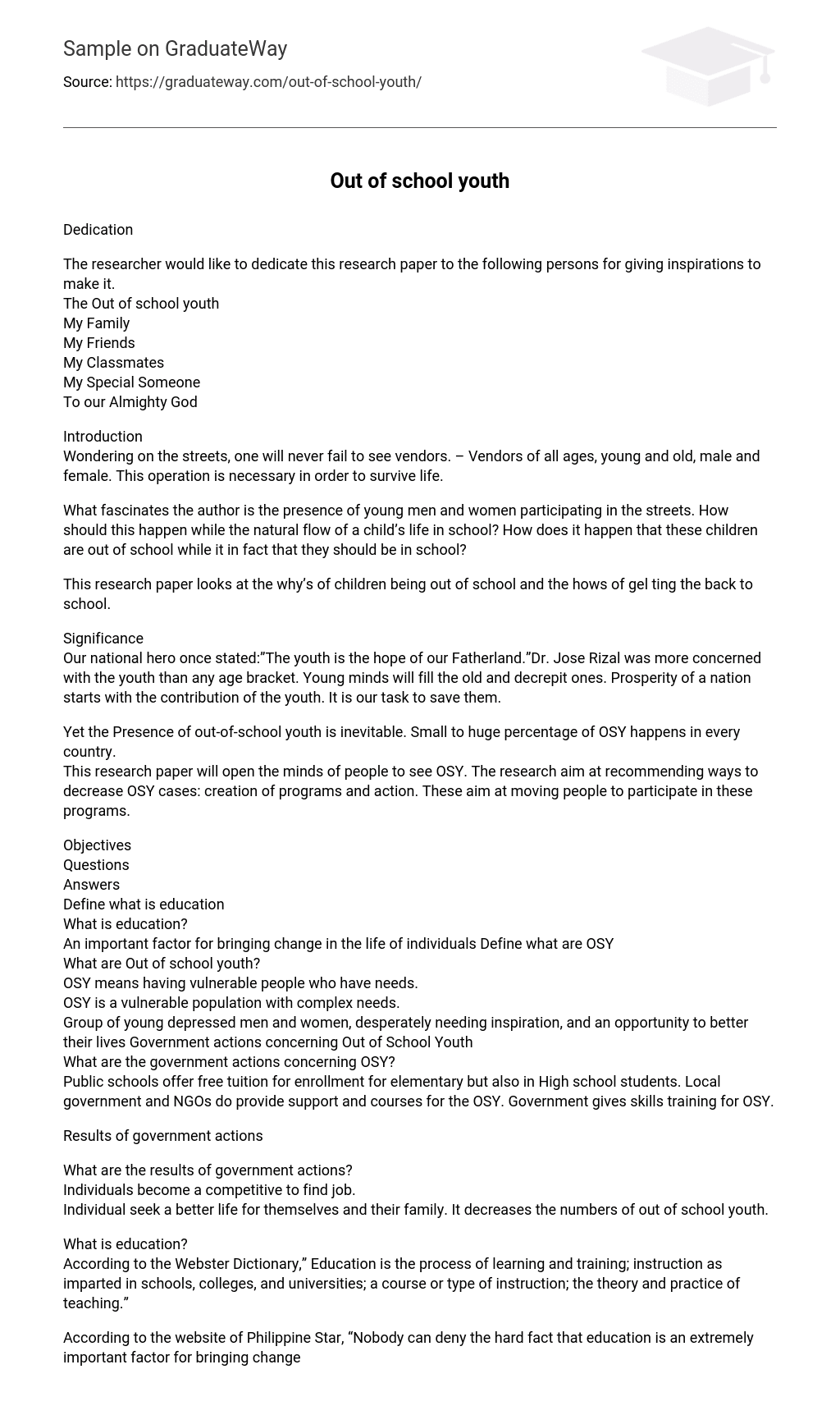Out-of-school youth (OSY) are individuals between the ages of 6 and 24 who are not enrolled in school and have not completed their primary or secondary education. This group of youth represents a significant percentage of the population in many countries and is a growing concern for policymakers and educators. The problem of OSY is multifaceted and complex, and addressing it requires a comprehensive understanding of the various factors that contribute to youth dropping out of school.
One of the major contributing factors to OSY is poverty. Many young people who live in poverty cannot afford to pay for school fees, uniforms, and other supplies, which can prevent them from attending school regularly or completing their education. In addition, poverty can also lead to poor health, which can further hinder a child's ability to attend school and learn effectively.
Another significant factor contributing to OSY is a lack of access to quality education. In many parts of the world, schools are overcrowded and underfunded, leading to a lack of resources and inadequate teaching staff. This can result in a lack of motivation for students to attend school and a lack of support for those who are struggling to keep up with their studies.
Other factors that contribute to OSY include conflict and violence, early marriage and pregnancy, discrimination and inequality, and a lack of supportive social and family environments. All of these issues can make it difficult for young people to stay in school and complete their education.
The problem of OSY has significant consequences for individuals, communities, and societies as a whole. Without an education, young people may have limited job opportunities and may be more likely to live in poverty as adults. They may also be more vulnerable to exploitation and abuse. At the societal level, a lack of education can lead to a lack of skilled workers, which can hinder economic development and progress.
To address the problem of OSY, it is necessary to implement a range of interventions and policies that aim to improve access to education, reduce poverty, and address the various other factors that contribute to youth dropping out of school. This may include initiatives to provide financial assistance for school fees and supplies, improve the quality and accessibility of education, and create more supportive social and family environments for young people. It is also important to involve young people in the design and implementation of these interventions, as they are often the ones who are most affected by the problem.
In conclusion, the problem of out-of-school youth is a complex and multifaceted issue that requires a holistic approach to address. By improving access to education, reducing poverty, and addressing the various other factors that contribute to youth dropping out of school, it is possible to help young people stay in school and complete their education, which can have significant benefits for individuals, communities, and societies as a whole.





